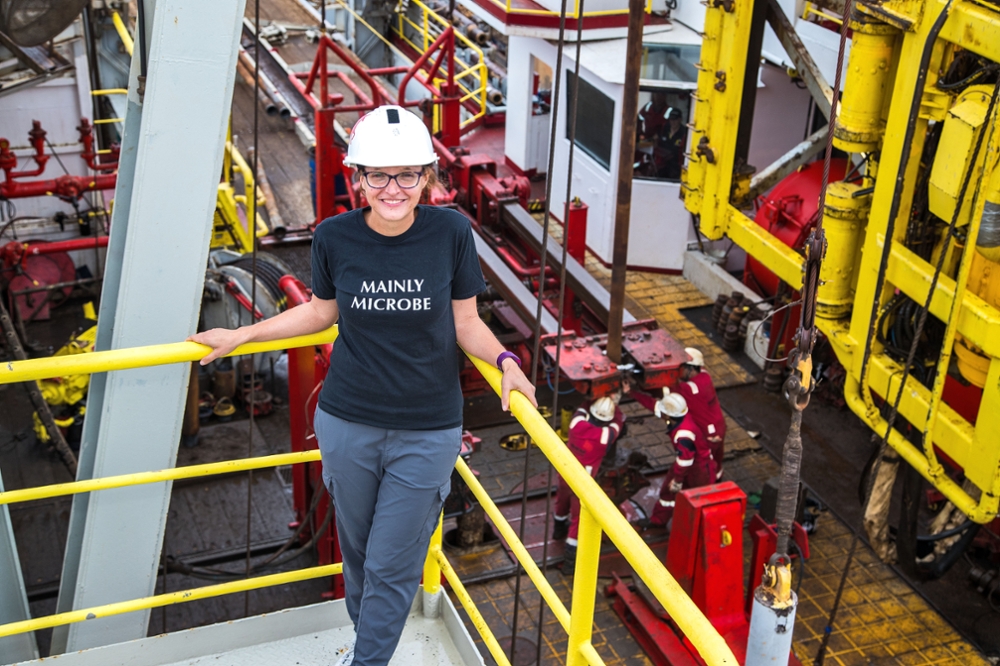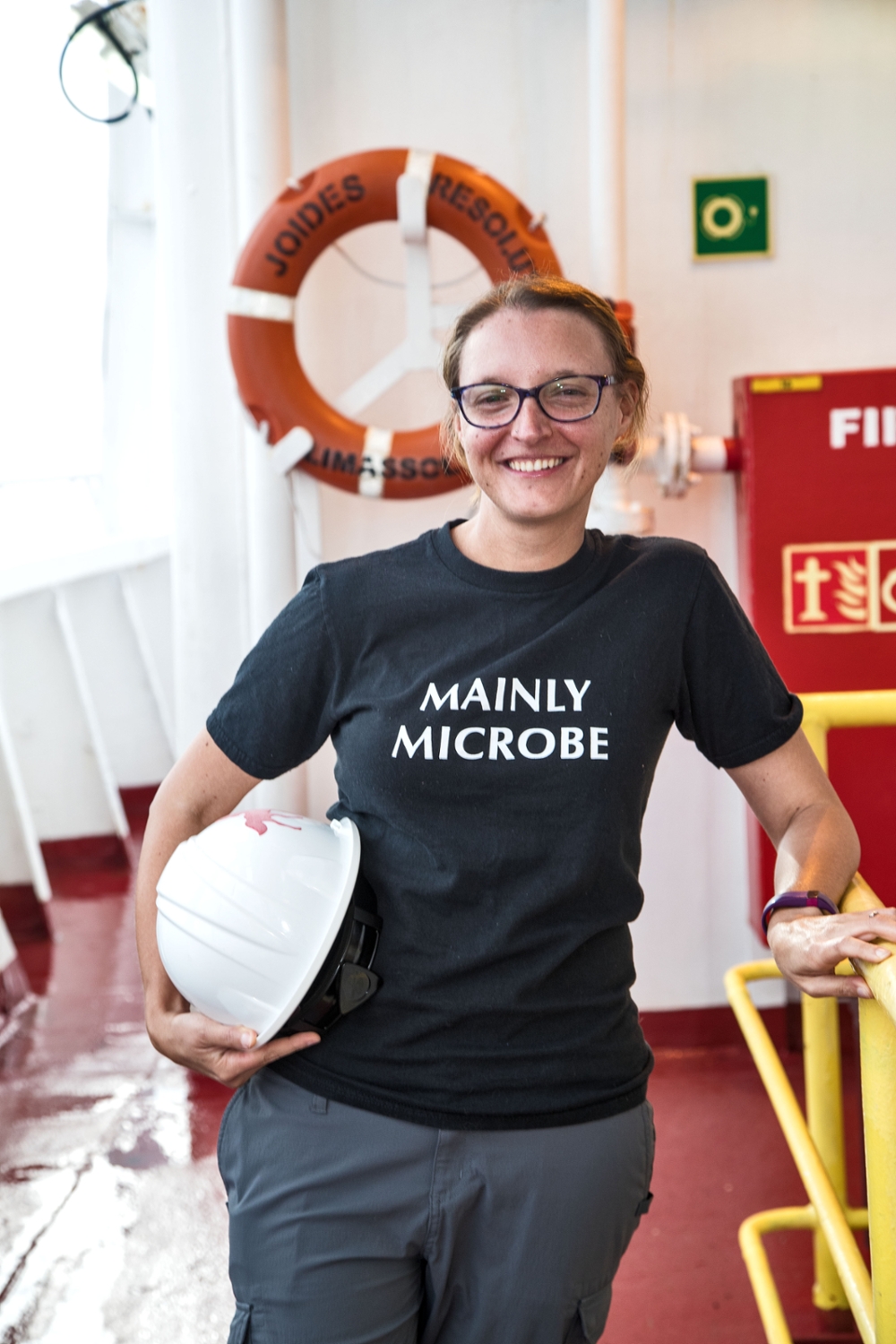Dr. Labonté, Studying the Limits of Life
May 24, 2018
Tweet
By Patrick Temperilli, Academic Affairs
Dr. Jessica Labonté, an assistant professor at Texas A&M University at Galveston, will spend the next two months in the waters off New Zealand as part of an elite team of 30 researchers from around the globe. On board the R/V JOIDES Resolution, Labonté and her group are studying the Brothers Arc Flux, an underwater volcanic system.
“It’s far from a vacation,” said Labonté, one of four microbiologists chosen for the trip. “Working in pairs, the teams operate in 12-hour shifts, seven days a week.” Her team is joined by an international cast of geologists, petrologists, geochemists and others performing their own research.
To be part of such a select group, Labonté had to submit an application that was essentially a grant, complete with two-page proposal. “About a year before the expedition, the International Ocean Discovery Program will have a call to apply to sail,” Labonté said. “The success rate varies, but it’s typically around 40%.”
“Because this expedition has microbiology-focused objectives, there were a lot of microbiologists that were interested in going, so when I got the email saying I was chosen, I was just ecstatic,” she said.
Labonté will be the only TAMUG faculty member, and the third total from The Texas A&M System, to participate in research aboard the JOIDES; she joins Texas A&M University’s Dr. Jason Sylvan and Texas A&M University – Corpus Christi’s Dr. Brandy Reese.
“In each campus we will have someone who studies the deep subsurface microbiology. It’s a small community, so having three people in the A&M System with this expertise is valuable,” noted Labonté.

Funded by the National Science Foundation’s Geoscience Division, the JOIDES is one of a small number of deep drilling scientific research vessels around the world. At 143 meters long, the ship is stable enough to drill about six miles below the ocean’s surface, giving scientists unique access to core samples of what’s under the ocean floor.
This particular expedition focuses on the Brothers Arc Flux, an active underwater volcanic system. “It’s different from other hydrothermal systems in the sense that it is high in toxic metals and very acidic water,” Labonté said. “It almost mimics the conditions present during the early Earth and the origin of life, and even on other planets.”
“In terms of microbes, it’s really about trying to understand the limits of life,” Labonté said. “The water surrounding this environment is 300 degrees Celsius (572 degrees Fahrenheit). We sterilize things at 121 C, yet they’ve found bacteria in this 300 C water. It’s very acidic. How do these microbes adapt and survive in these environments?”
Apart from her own research, Labonté has a special task onboard JOIDES. Because of their specialization, microbiologists are the first on duty when the samples come in. “We are the first ones that get to touch the samples to prevent contamination, and then everyone else can do their work,” Labonté said.
Her teams will conduct quick tests, contamination checks, microbial counts, then split the samples. The samples are then frozen, and upon the vessel’s return, will be shipped to researchers around the world. The remaining samples will be stored at one of the International Ocean Discovery Program’s Core Repositories, one of which, the Gulf Coast Repository, is housed in Research Park at Texas A&M.
Labonté may have to contend with rough weather and seasickness, but she doesn’t seem bothered by the prospect. “We won’t touch shore for two months,” she said, “but I’m enjoying the experience and looking forward to my research.”
And her research can’t start until she comes ashore. Because a lot of the work Labonté does is molecular biology-based and involves specialized equipment such as a centrifuge, which is not allowed on ships, she will have to wait until she is back in her lab at TAMUG to start her work.
Dr. Labonté is excited about what her research on the limits of life for microbes, bacteria, archaea and viruses could reveal.
“If you think about the Earth, we really only know about its surface.”
###
Media contact:temperilli@tamug.edu, 409.740.4783